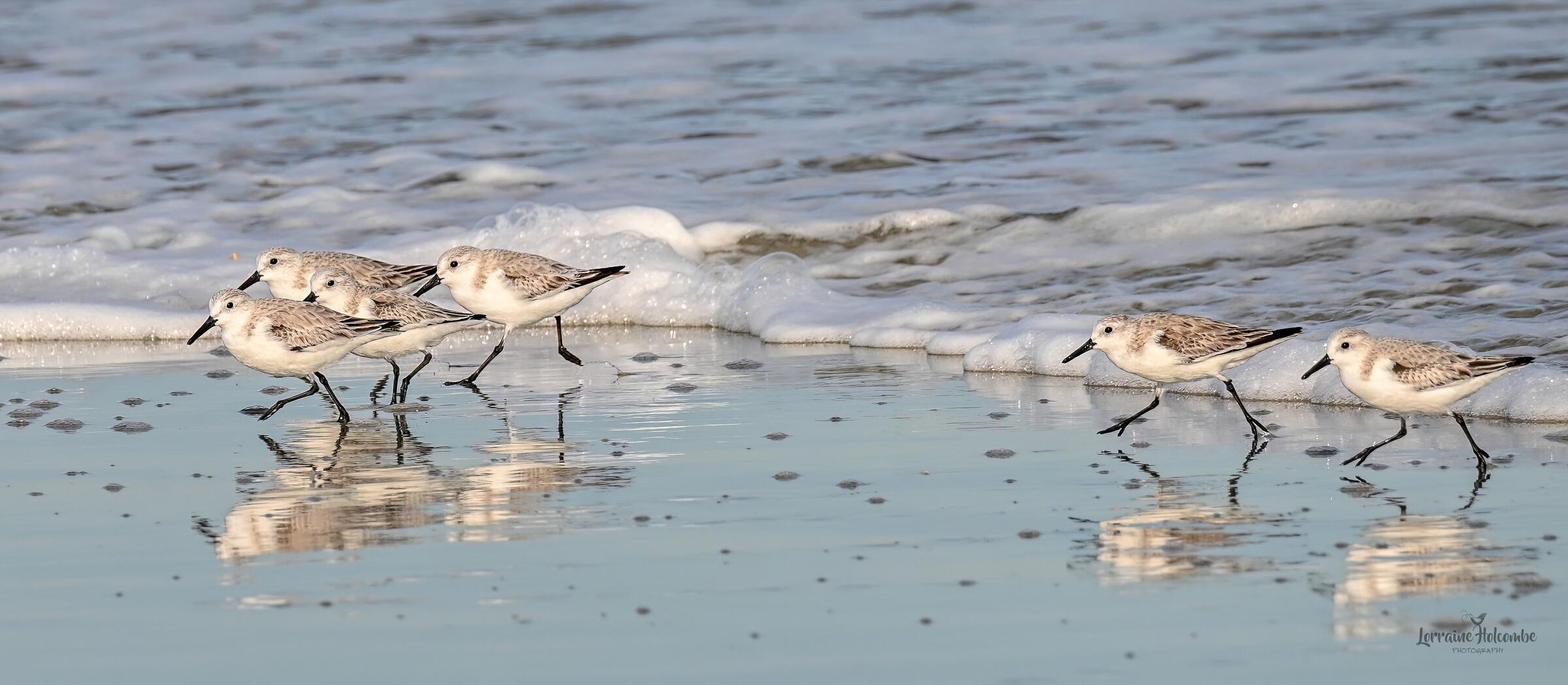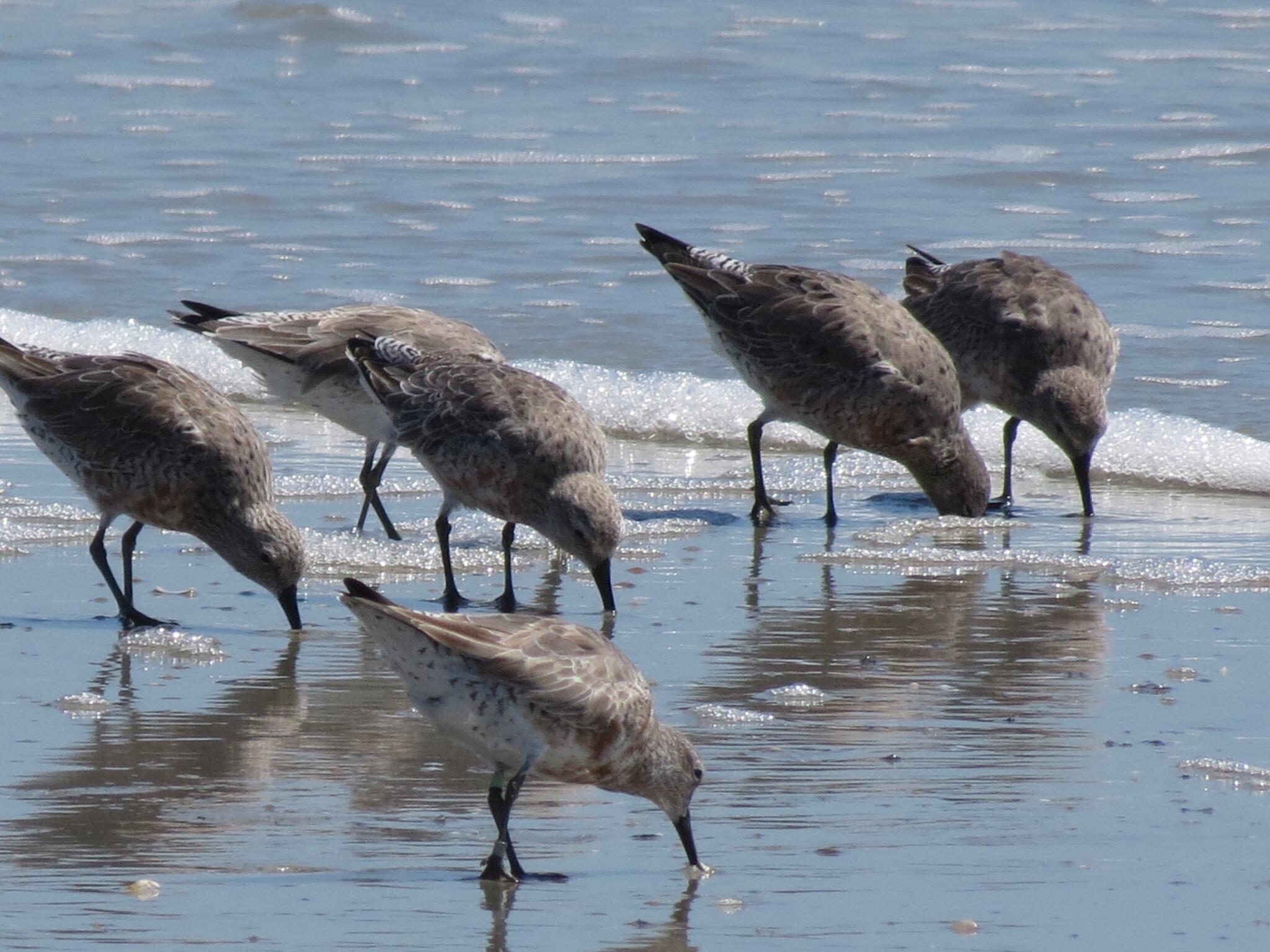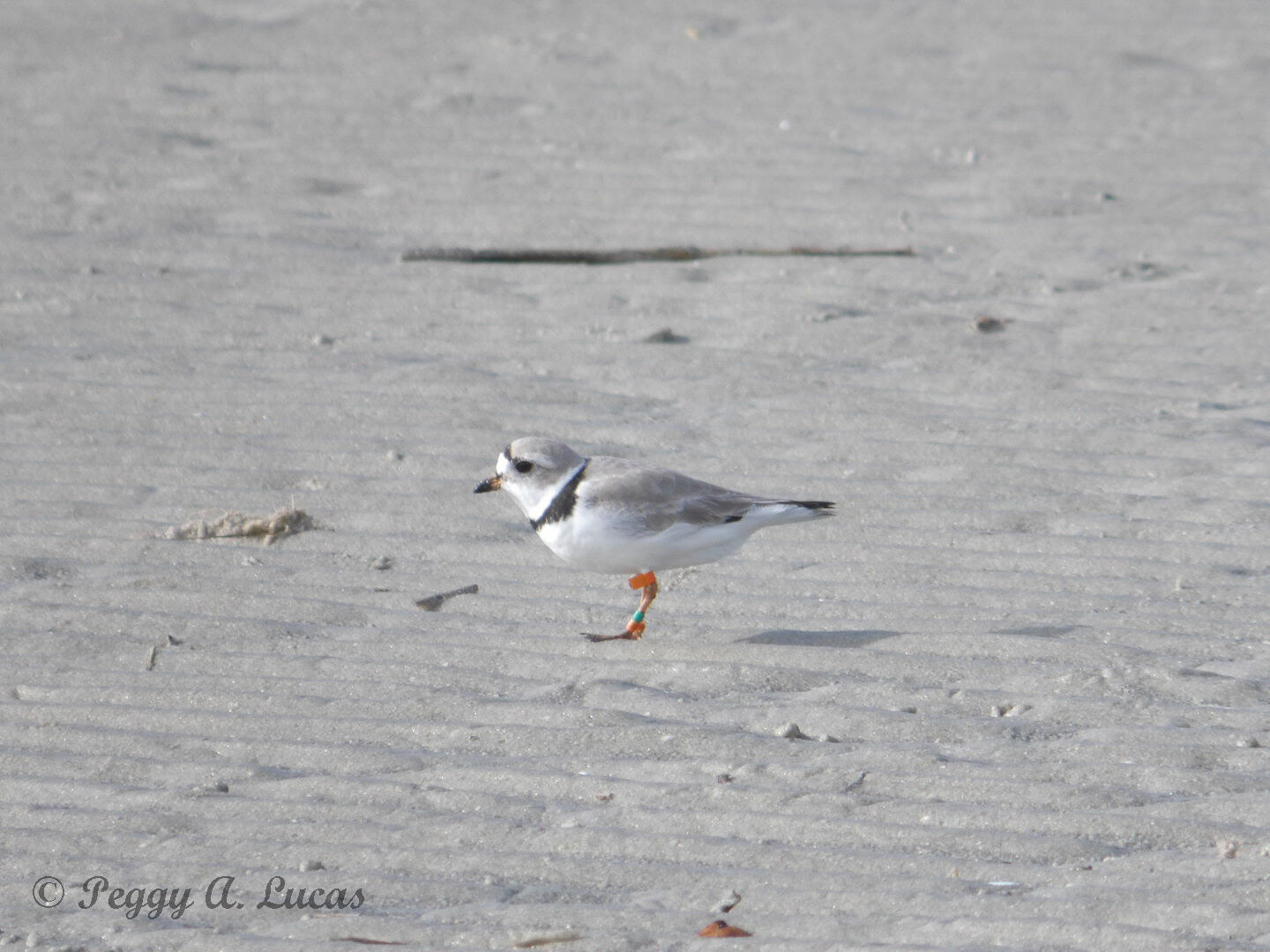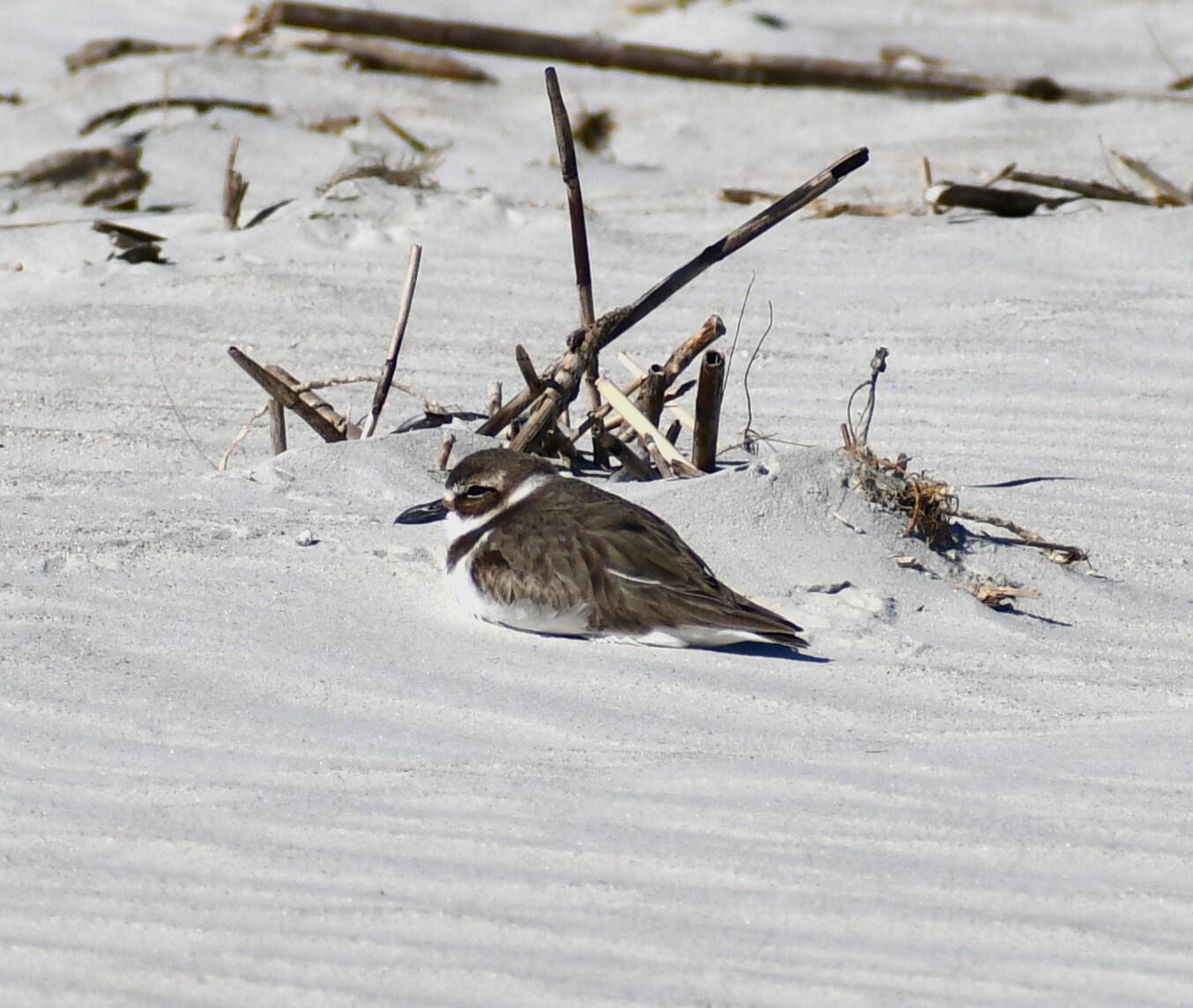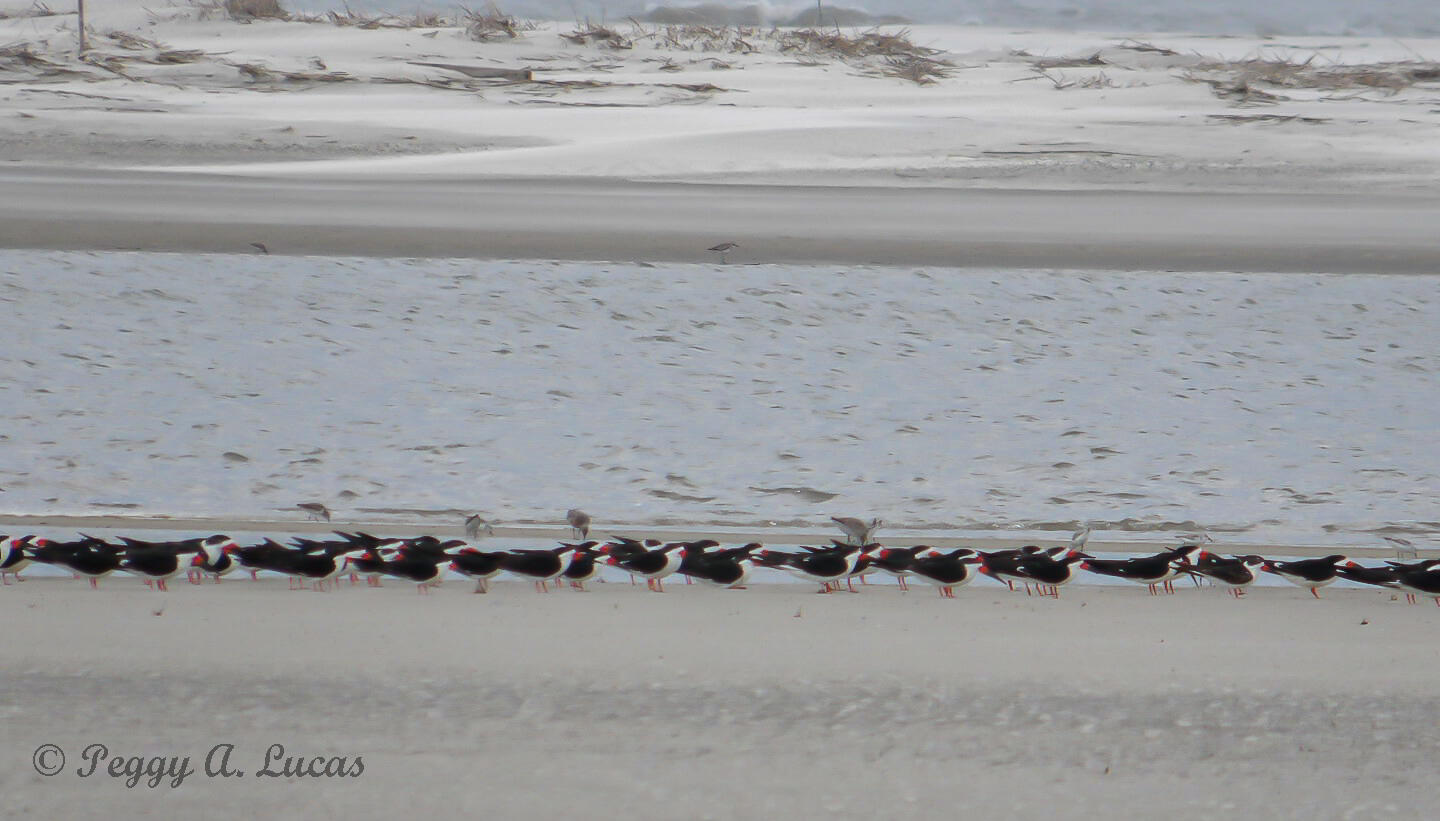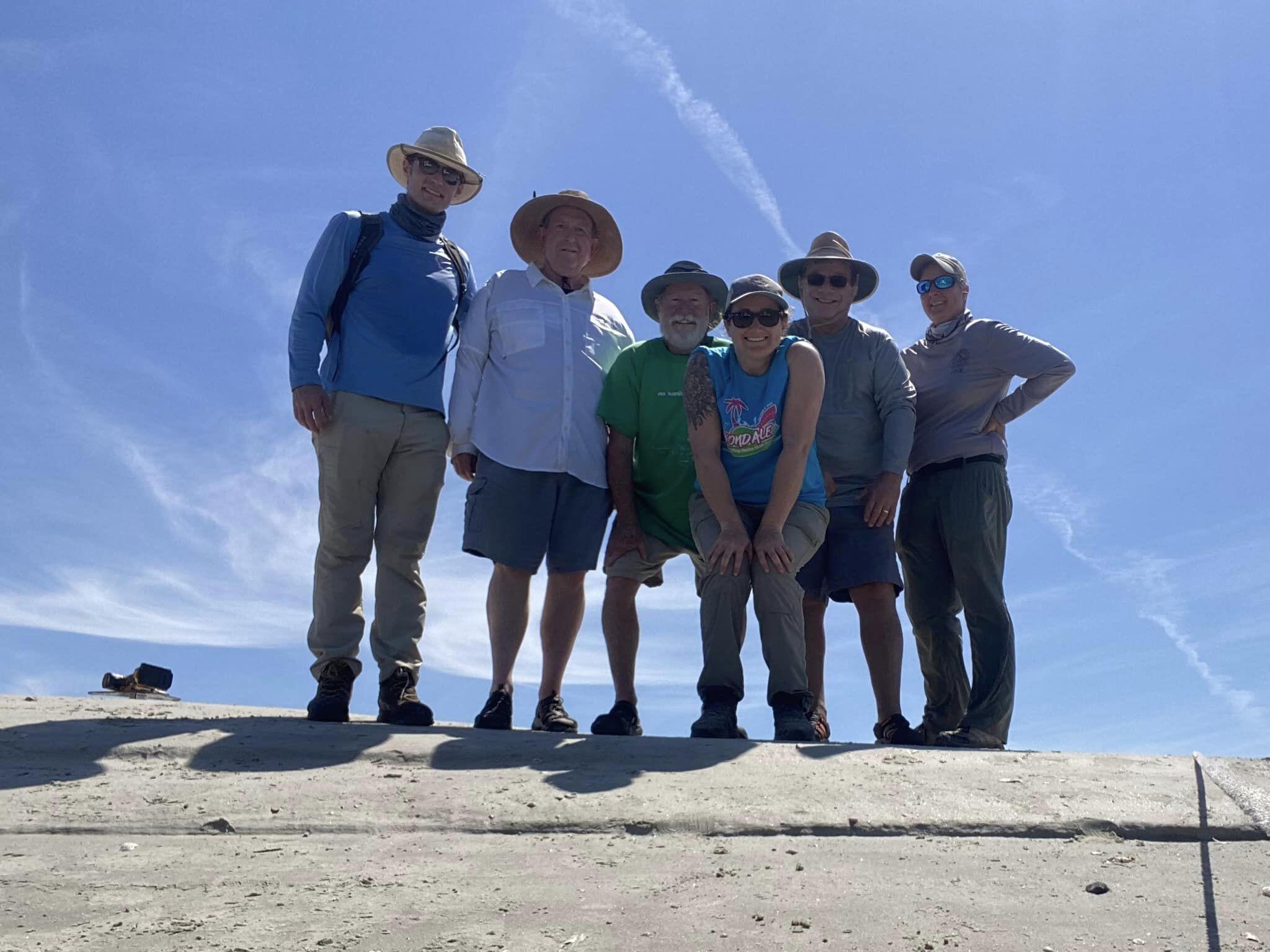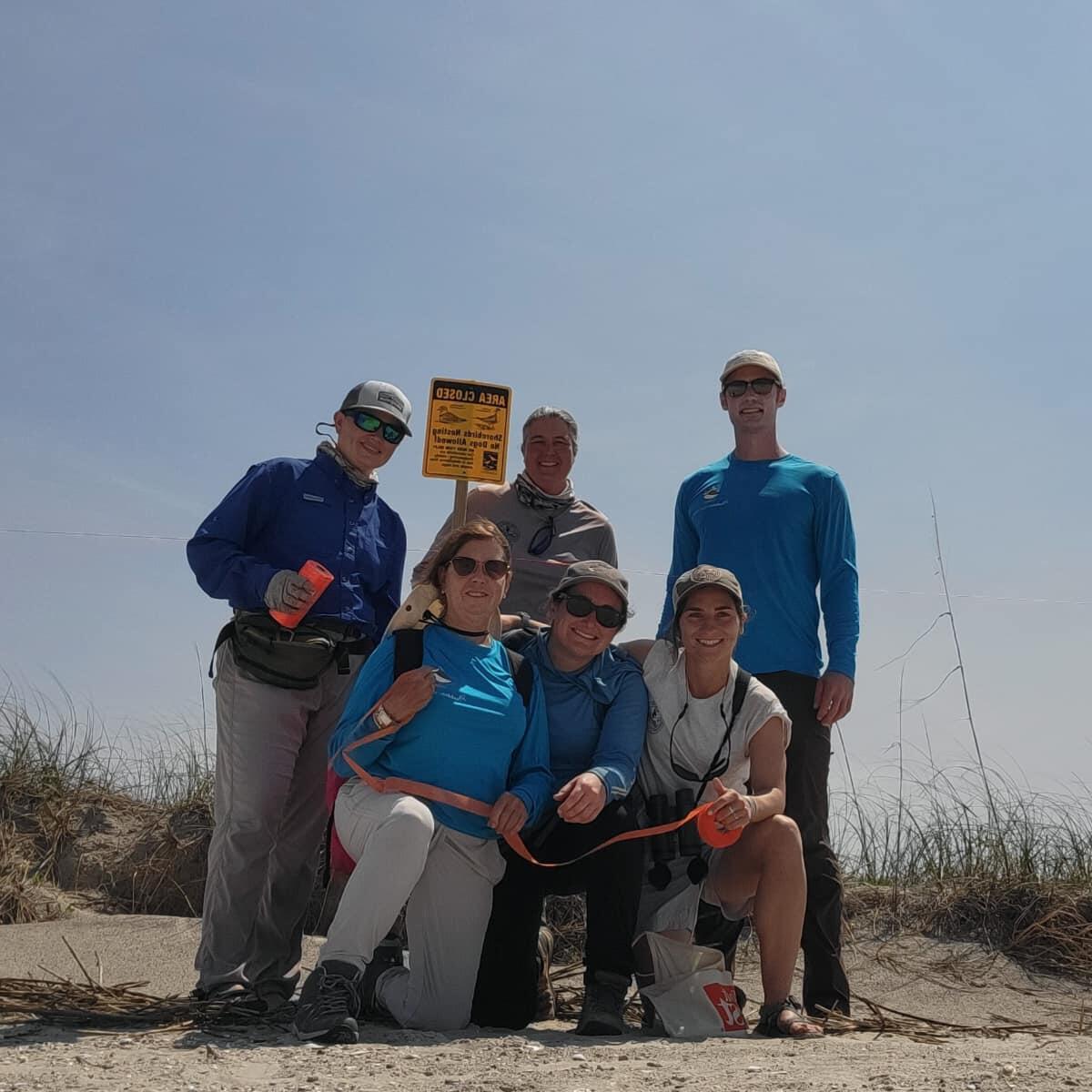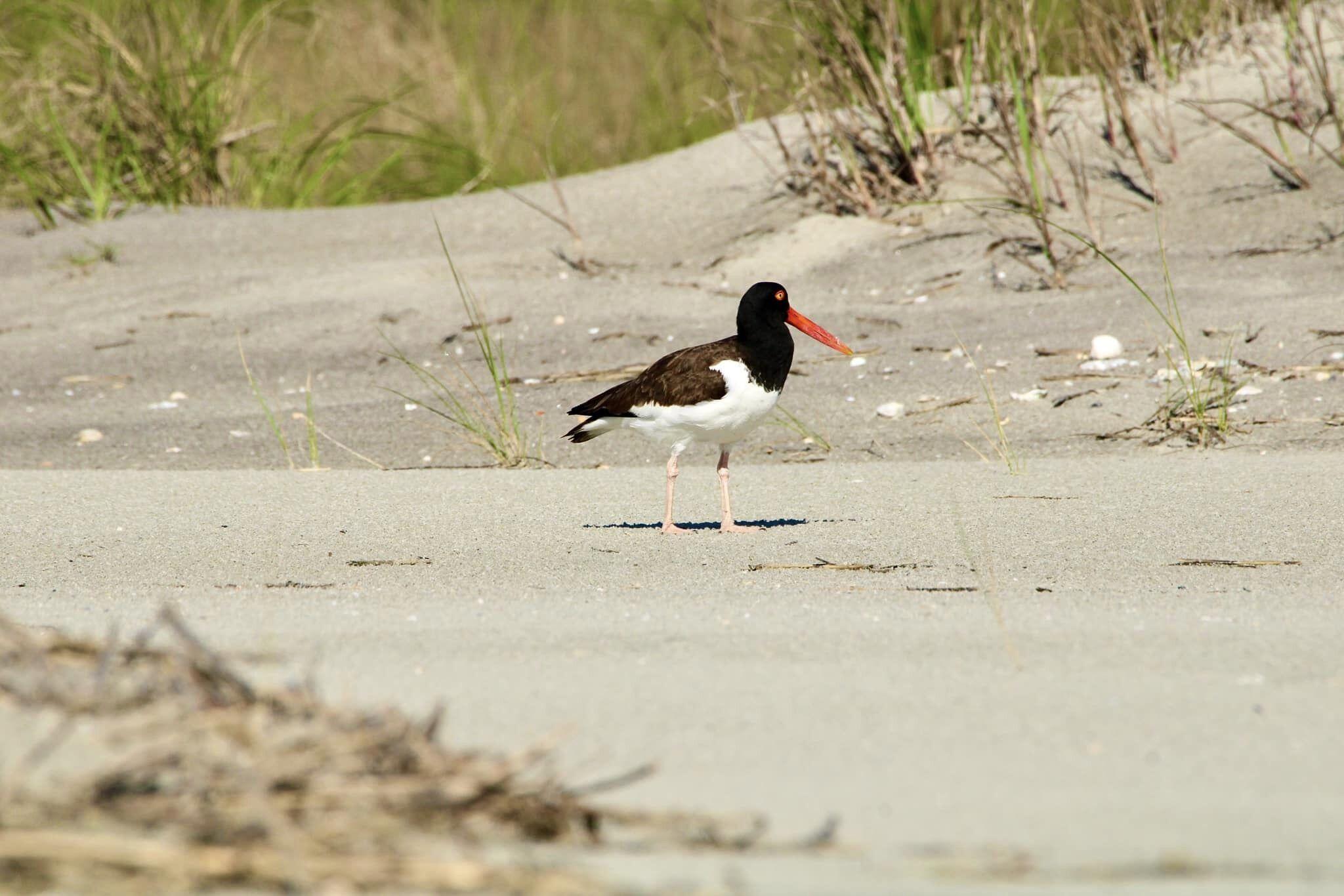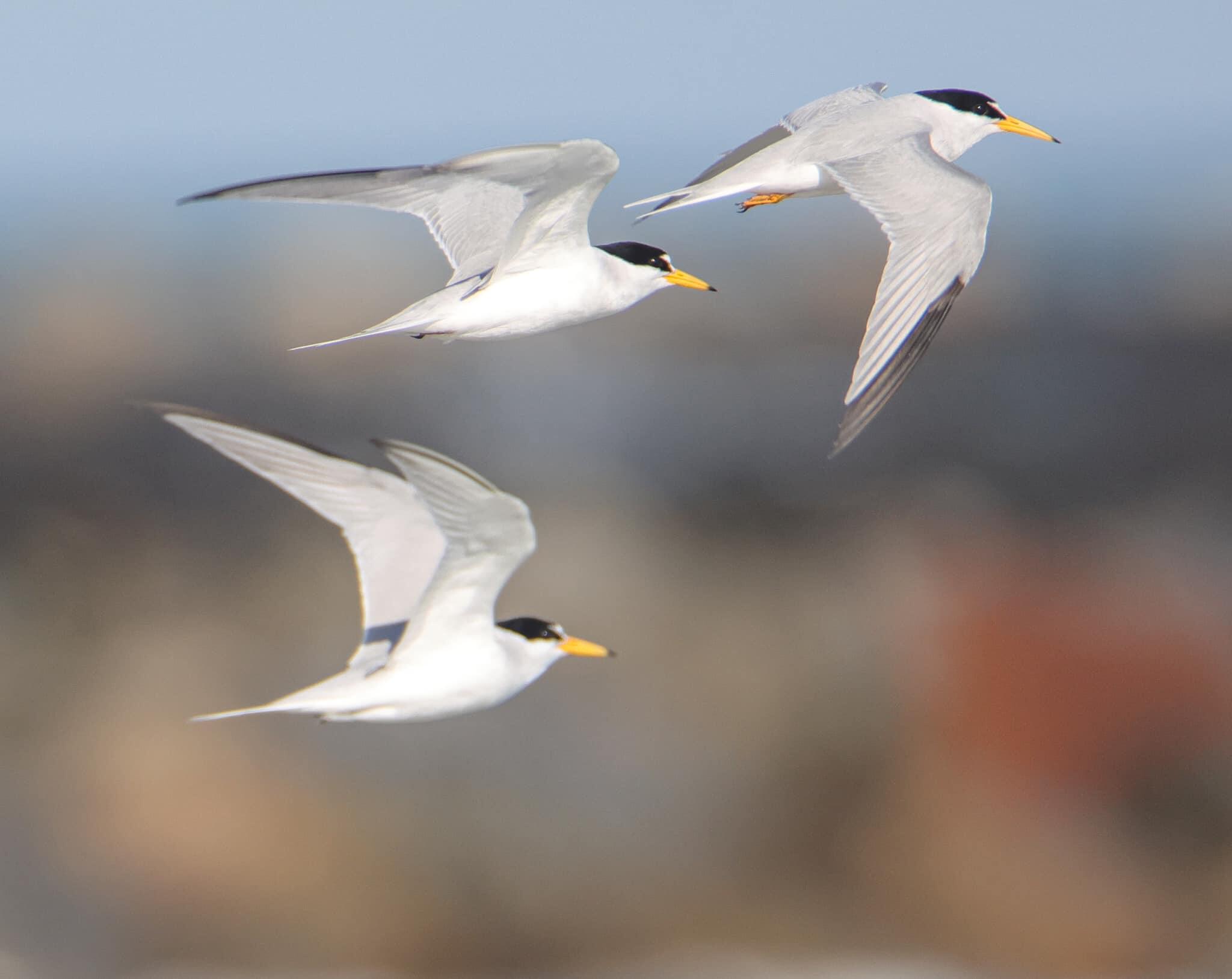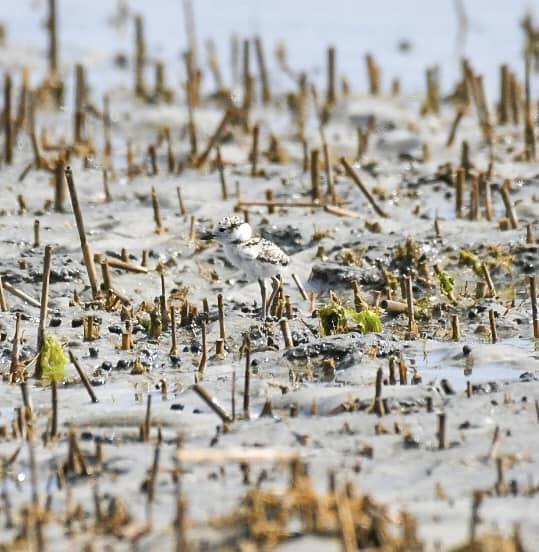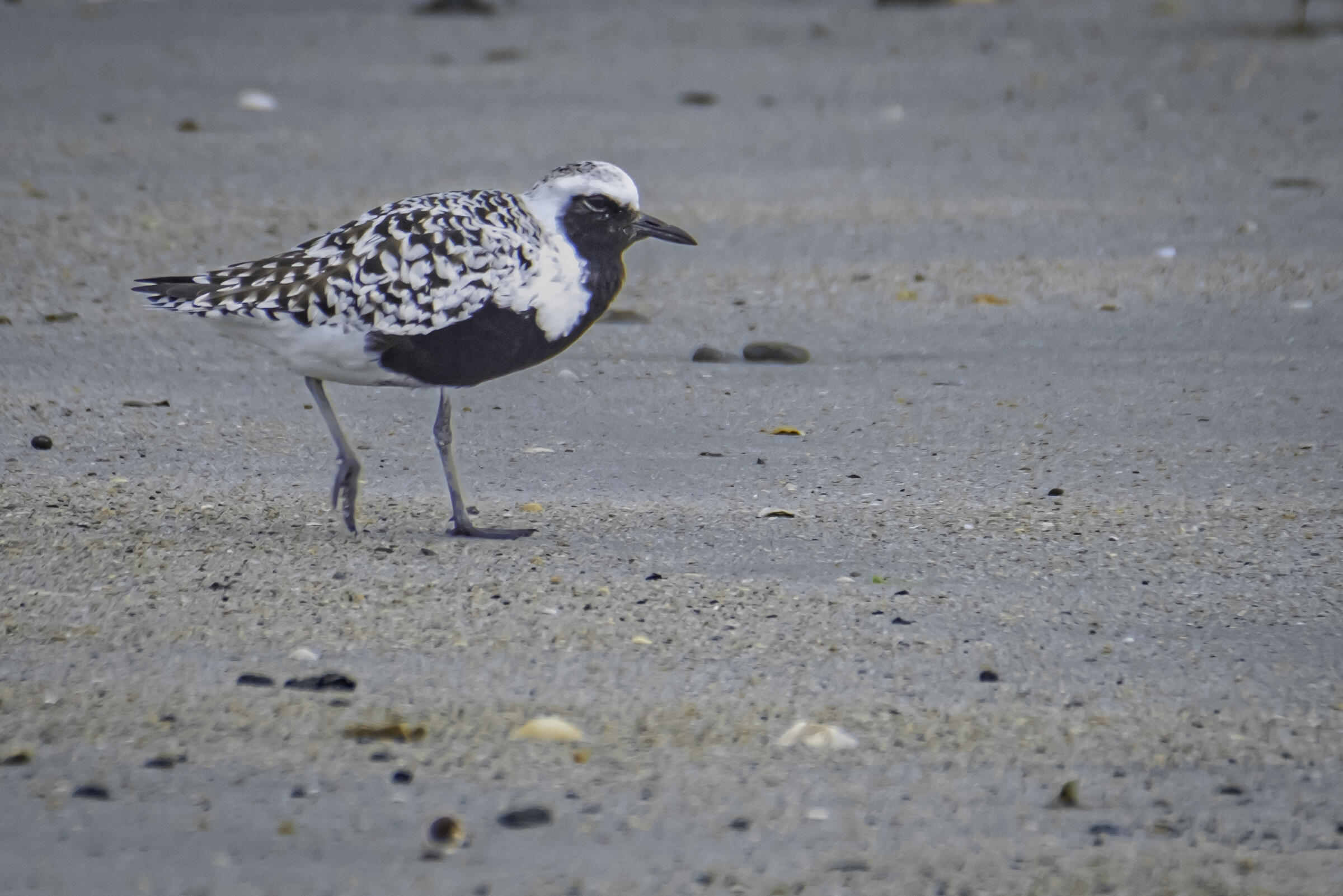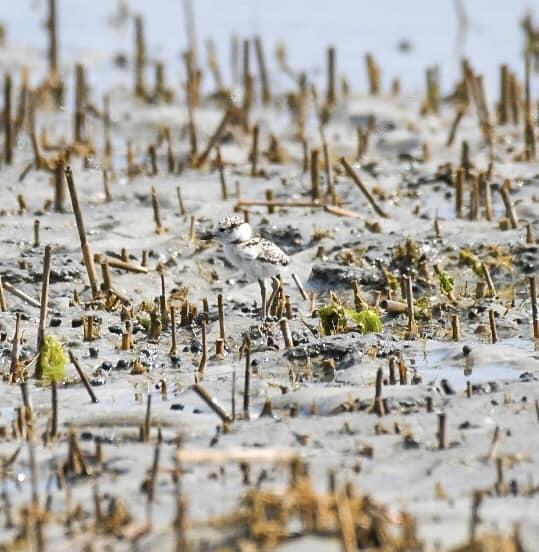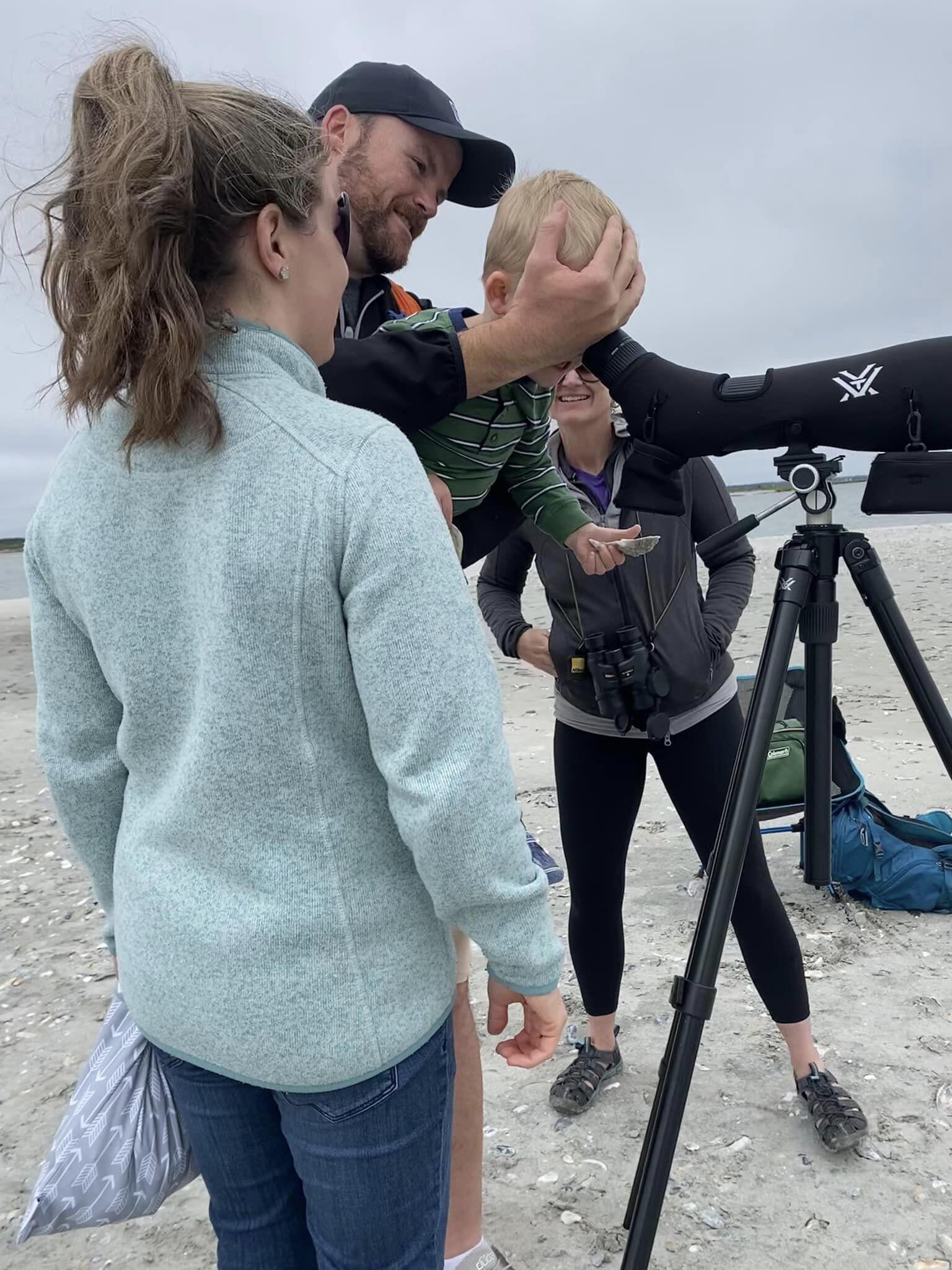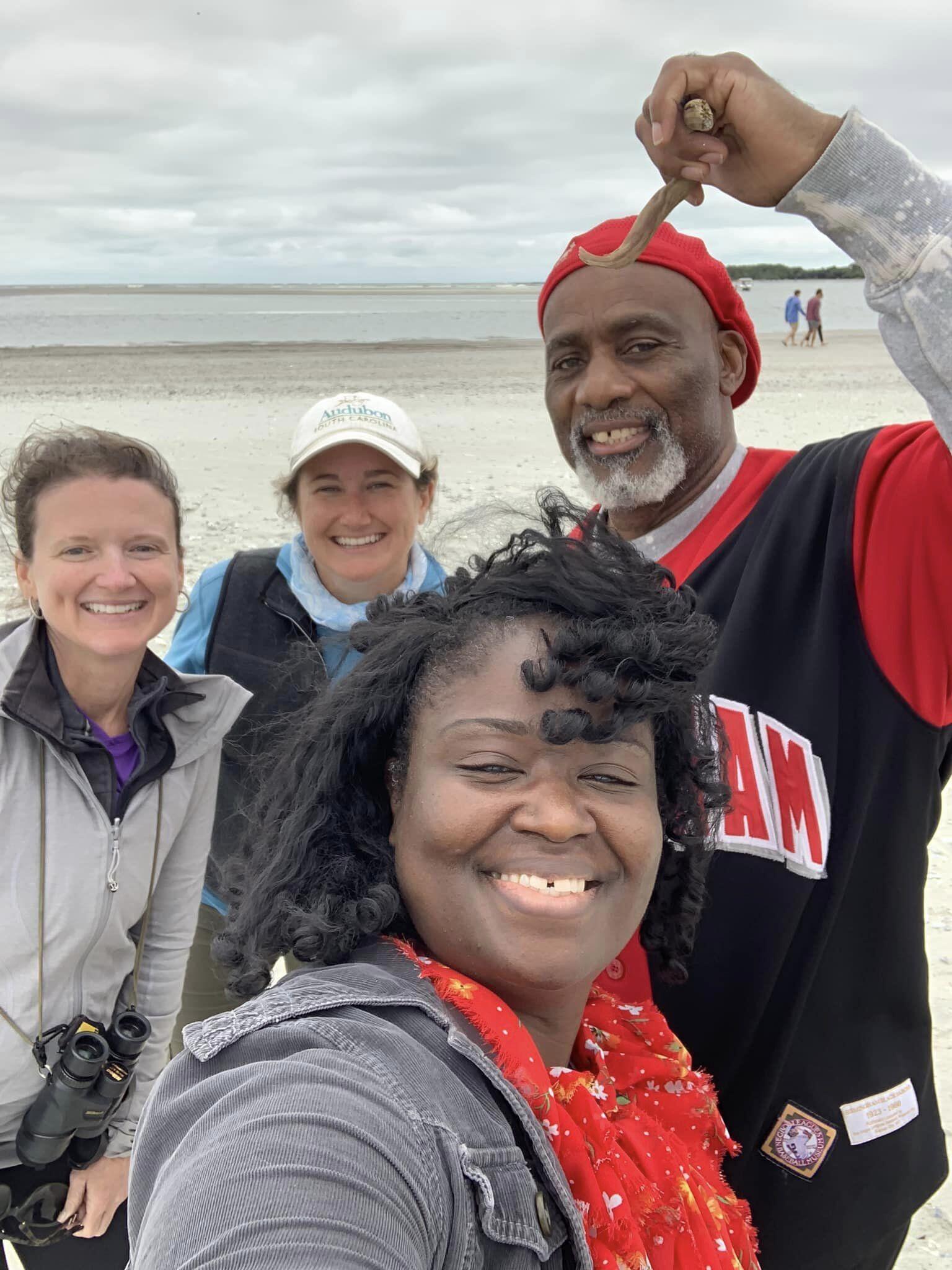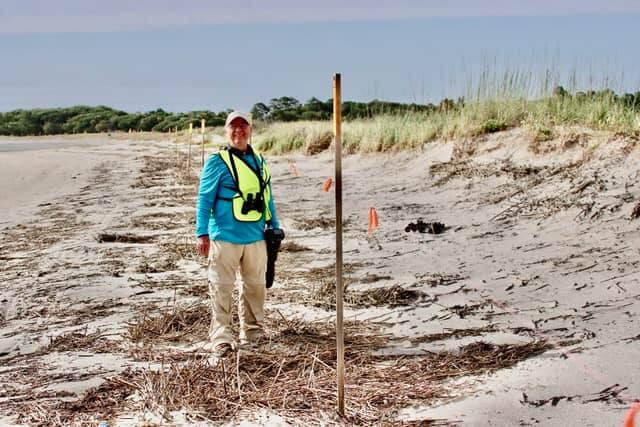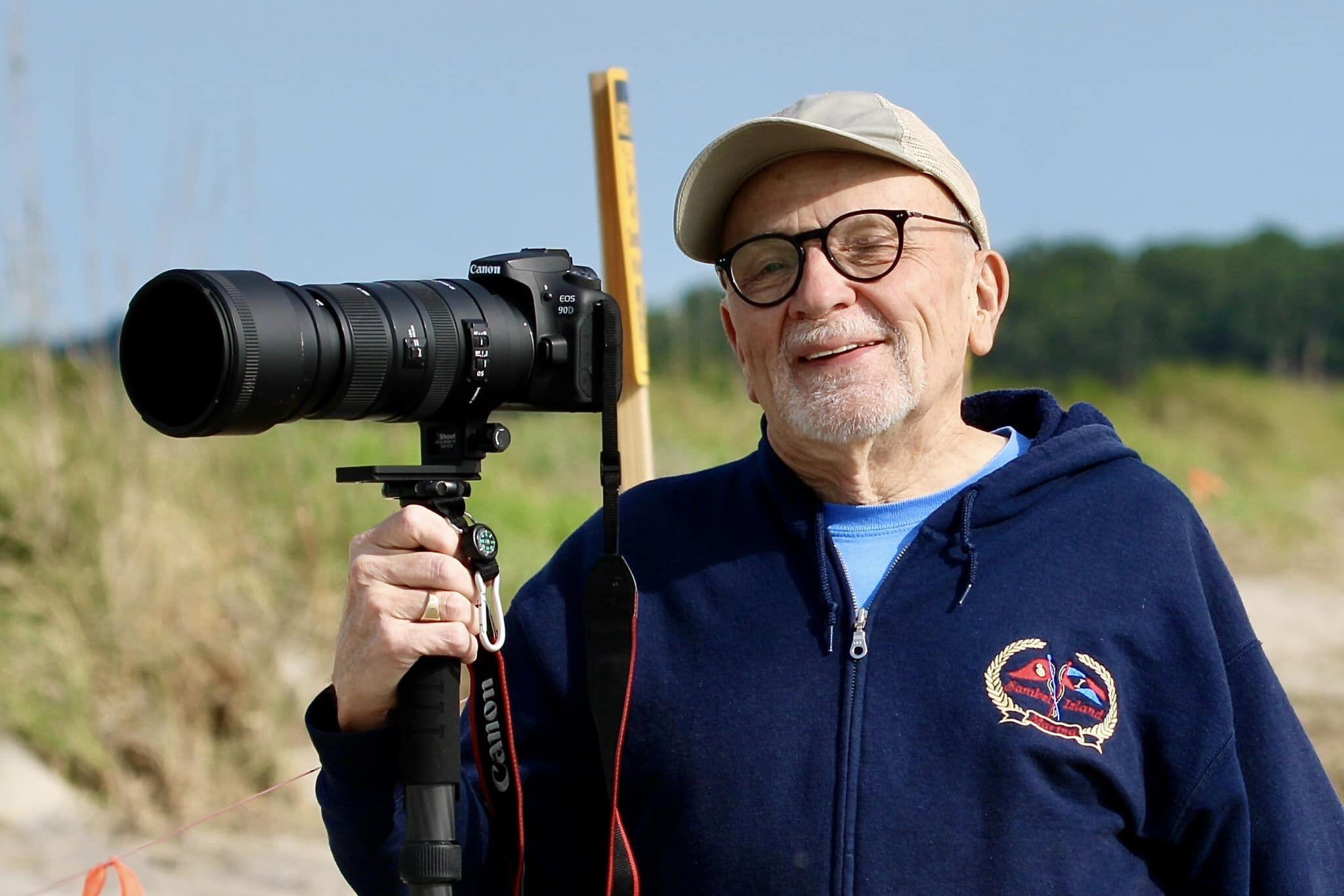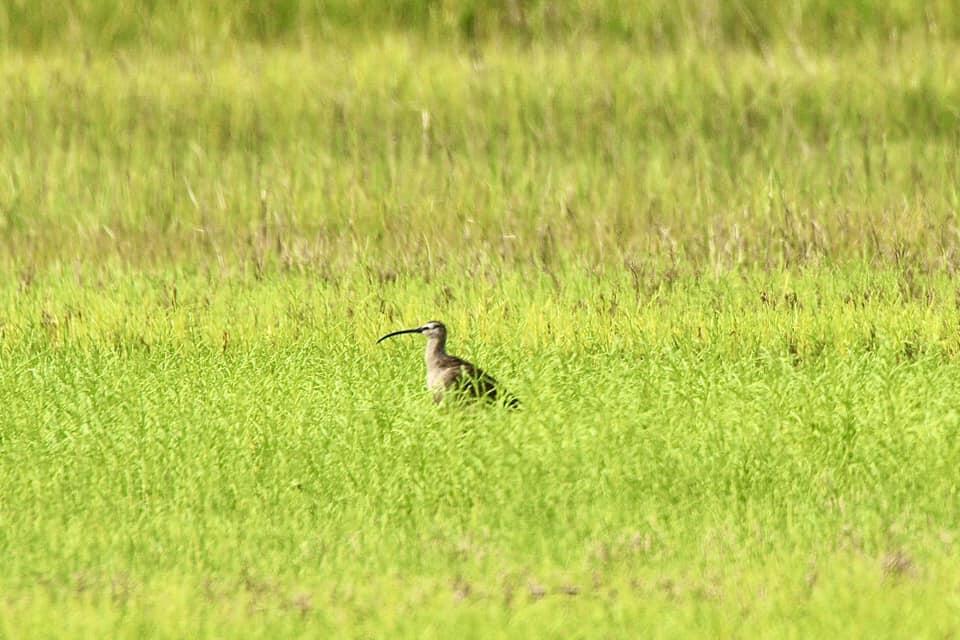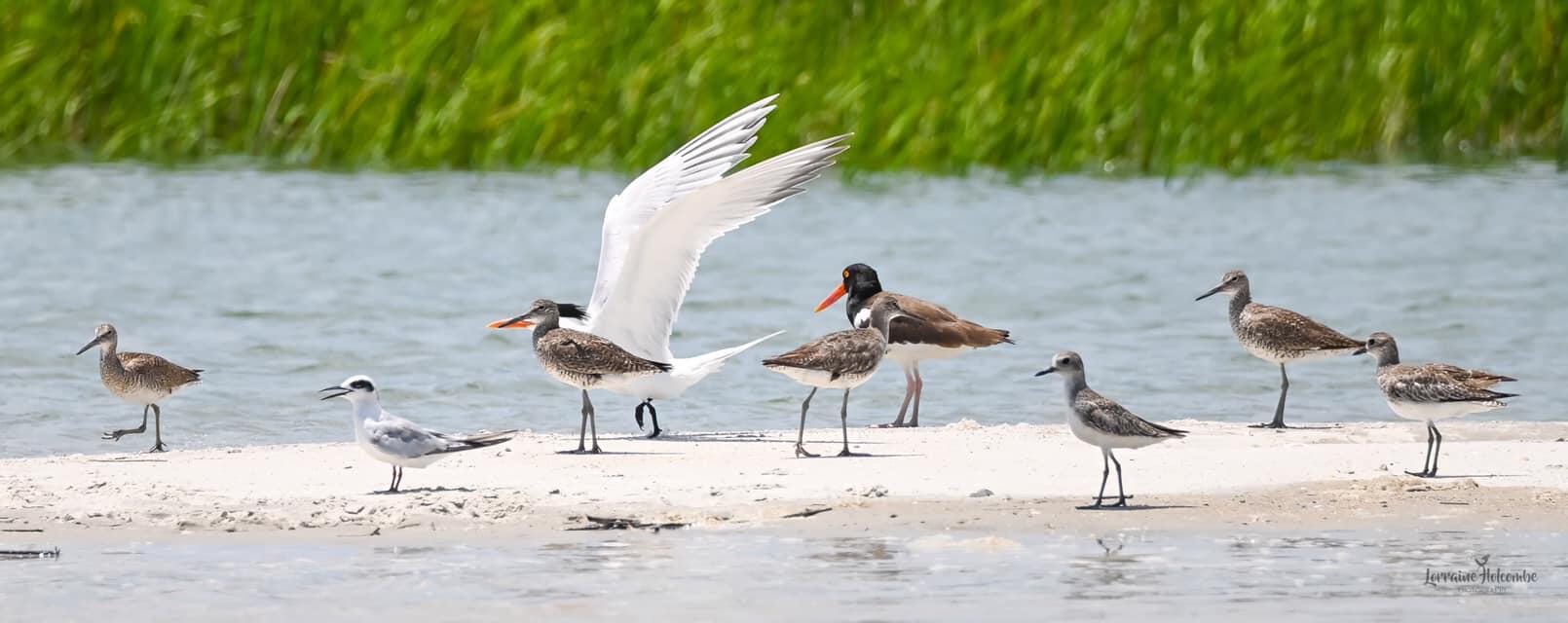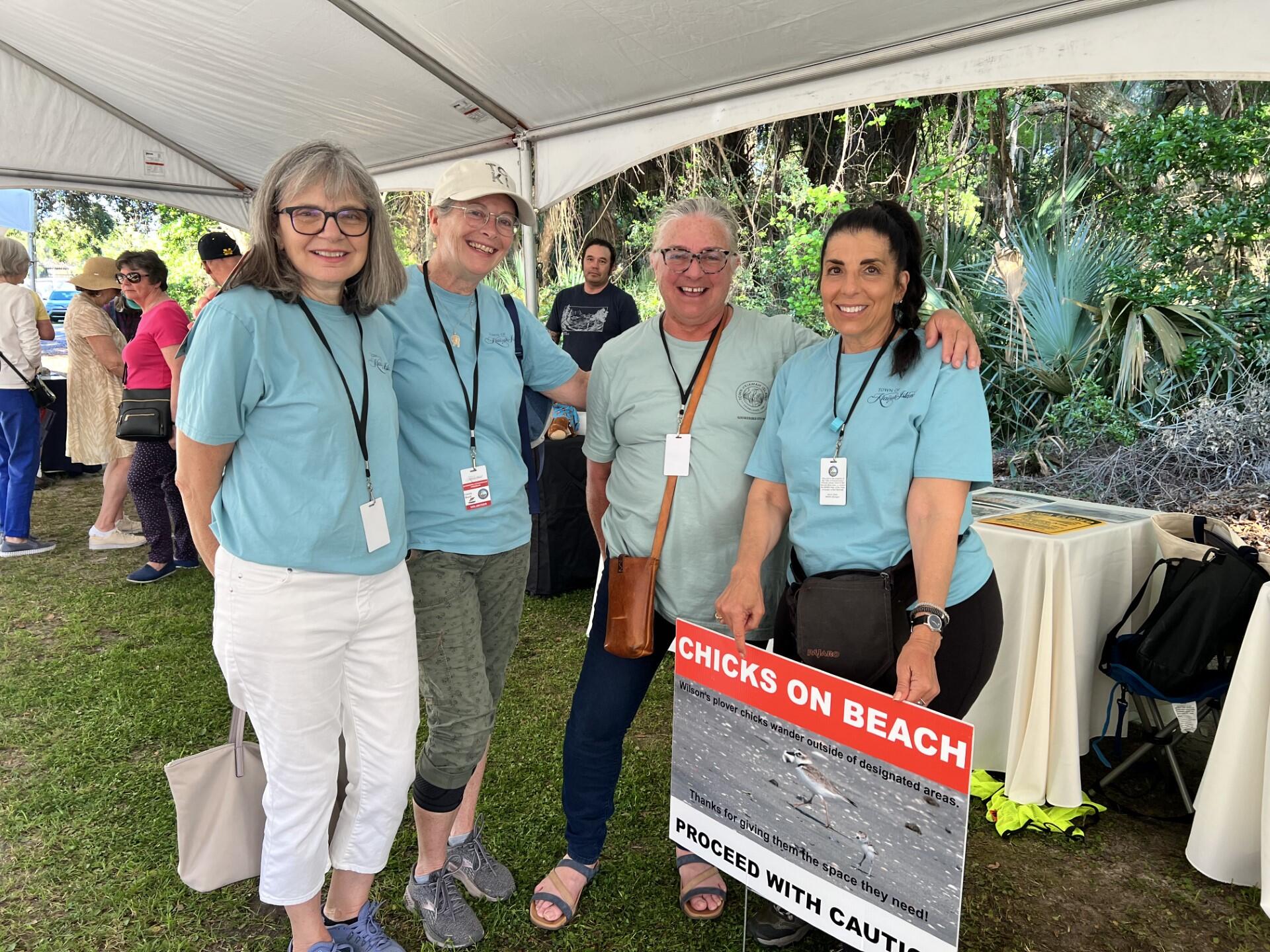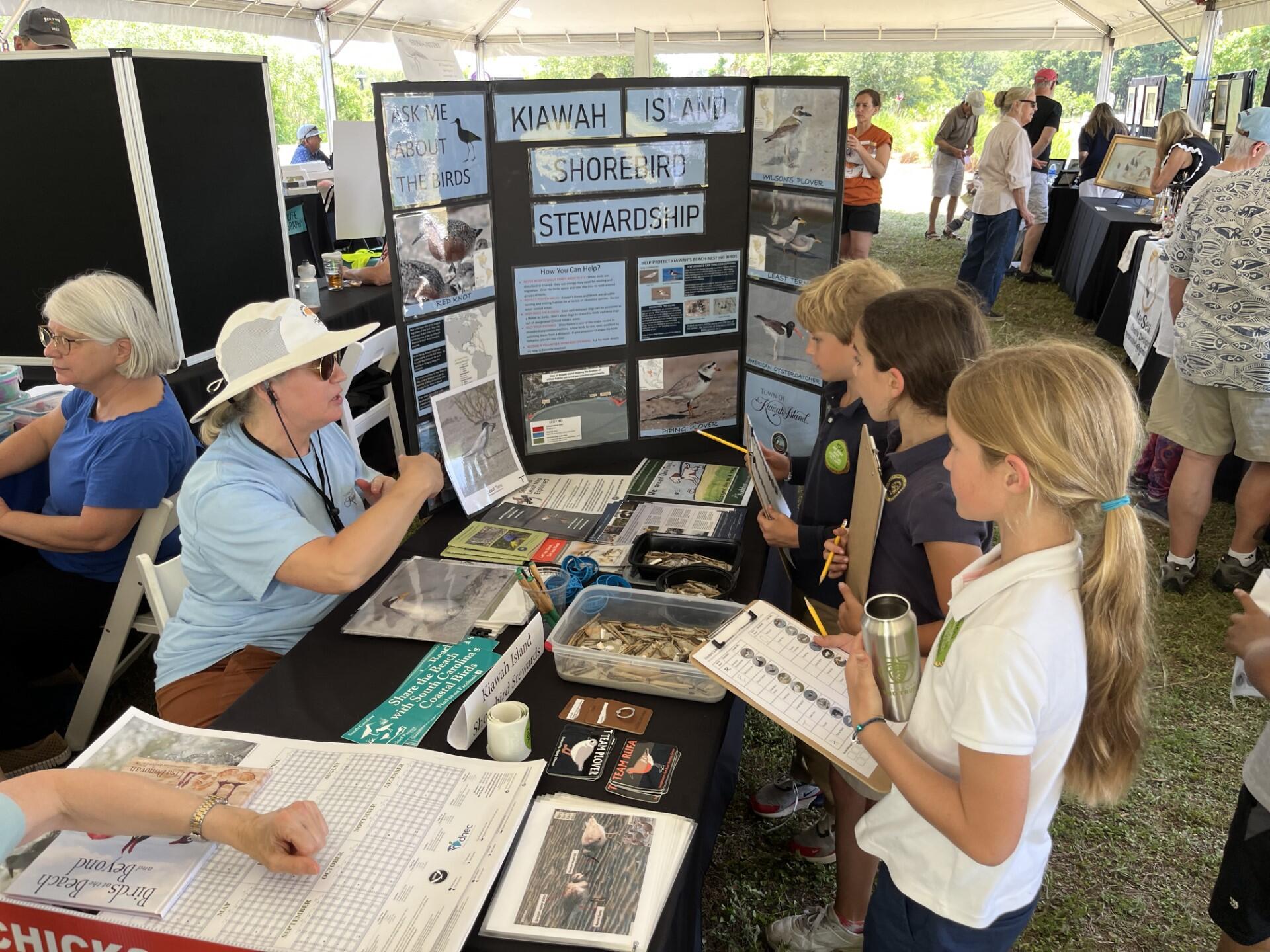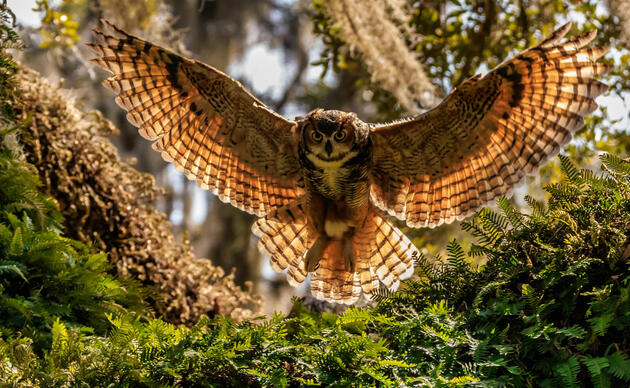Audubon South Carolina’s Coastal Stewardship Program works to protect vulnerable coastal bird species as they battle against natural and anthropogenic challenges to survival. Staff and volunteers work along the 2,876 miles of South Carolina’s tidal coastline to protect Federal and State-Threatened species like Red Knot, Piping Plover, Wilson’s Plover, and Least Tern. From lifelong and novice birders to teachers and even some students, these Audubon Shorebird Steward volunteers have been trained and deployed to twelve sites this year with one goal: prevent human disturbance to coastal birds through education. Read along to see how these volunteers and the birds they protect have fared between March and June this year.
Executive Summary:
- We have had more stewards engaged this year (149) but fewer hours reported compared to this time last year. This may be a result of a rainy Memorial Day weekend when we usually get more hours than we did and because two sites ended the season early after the nesting birds abandoned the site.
- Specific disturbance data reported by Shorebird Stewards reveals that dogs are the largest cause of disturbance with 210 reports. Other types of disturbances included people walking through nesting areas (25), low flying aircraft (13, not including drones) and boats (14).
- Most of these disturbances were reported as successfully prevented by Stewards, except the low flying aircraft.
- Overwash has been reported and observed to have negatively impacted shorebirds nesting at Lighthouse Inlet, Bull Point on Pritchard's Island and Edisto Beach State Park, with Least Terns also being affected at Huntington Beach State Park, Kiawah Island, Morris Island, Bull Point, Isle of Palms and Hunting Island State Park.
Training sessions begin annually in late February and continue through the end of March and a virtual recording of our training is available for prospective volunteers that come to us in the middle of the busy breeding season. This year, volunteers began working at twelve beach sites but due to high tides paired with heavy winds early in the season, some of these were overwashed within two months of the beginning of the season.
The following data has been reported by ASC staff and volunteers from these sites. In total, 149 Shorebird Stewards have volunteered 1,700 hours and reported interactions with approximately 1,127 beachgoers, protecting hundreds of individual birds throughout their migratory and breeding seasons. Only a handful of these interactions were reported as negative. Compared to our 2022 Mid-Season Report data, when 120 Stewards worked 1,730 hours, and spoke to 1,639 beachgoers, this year’s data is shows that while more Stewards were involved with volunteering, there have been fewer interactions and hours served. Contributing to this may be the fact that over Memorial Day, when there are typically huge crowds on the beach, stormy weather prevented many volunteers and deterred the crowds from the coast. This was fantastic news for the birds, though! Furthermore, two sites saw their nesting areas completely abandoned from aforementioned overwash events, meaning Stewards ended their seasons early. What's also impressive, Shorebird Stewards dedicated spent the summer holiday weekends protecting birds along the coast. Check out both the Memorial Day Weekend and July 4th Weekend reports to see our holiday specifdic data!
New data gathered this year breaks down what human disturbances the birds are facing along the coast. Stewards prevented several types of these, including: 210 dogs on and off leash, 8 bicyclists, 14 boats, 1 drone, 13 low flying aircraft, 8 people setting up too close to posted nesting areas and 25 people walking through posted nesting areas. Only some of these disturbances, like that of low flying aircraft, were unpreventable. While not all human disturbances can be prevented 100% of the time, it is important to remember that it only takes one disturbance to cause complete nest or colony failure and repeated disturbance to migratory birds can negatively impact their migration or ability to breed. Every prevented disturbance is incredibly important to coastal bird survival. Below are the data specific to each Stewardship Site and a few photos of our feathery and human friends!
Site Specific Data for March-June, 2023
| Site | # Stewards | # Volunteer Hours | Nesting Bird Species | Notes |
|---|---|---|---|---|
| Huntington Beach State Park | 17 | 287 | Wilson’s Plover, Willet | |
| Dewees Island | 4 | 22.5 | Wilson's Plover, Black-necked Stilt | |
| Isle of Palms | 10 | 200.5 | Least Tern colony failed due to overwash | These numbers reflect reports between April and June 9, when the colony officially abandoned the site |
| Morris Island | 8 | 132.5 | Least Tern, American Oystercatcher, Wilson's Plover | ASC staff has stewarded this island several times, but the hours are not reflected in the above hours |
| Folly Beach's Lighthouse Inlet | 6 | 72.5 | Wilson's Plover, Willet | |
| Kiawah Island | 52 | 637 | Wilson's Plover, Black-necked Stilt, Willet | This site focused heavily on Red Knot spring migration, engaging a broader community in stewardship through their newly established FlockWatch program, where volunteers followed flocks to protect them from disturbance |
| Seabrook Island | 25 | 108 | Banded American Oystercatcher U5 attempted nesting, but ultimately failed | This site focused heavily on Red Knot spring migration, protecting the flock from disturbance on the beach. Volunteers remained stewarding until it was confirmed that nesting at this site failed, around June 15th |
| Botany Bay Wildlife Management Area | 2 | 14 | Wilson's Plover, Least Tern | |
| Edisto Beach State Park | 6 | 50 | Wilson's Plover | |
| Harbor Island | 8 | 71.5 | Wilson's Plover | |
| Hunting Island State Park | 9 | 98 | Wilson's Plover, Least Tern, Black Skimmer, American Oystercatcher | |
| Bull Point at Pritchard's Island | 2 | 6 | Wilson's Plover, American Oystercatcher, Least Tern | Pritchard’s Island Turtle Team is a strong supporter of shorebird stewardship and will often educate beachgoers during their turtle patrol, noting what bird species are nesting and preventing disturbance, when possible. However, these efforts are not reflected in hours served while volunteering for Turtle Patrol. |
| Crab Bank Seabird Sanctuary | N/A | N/A | American Oystercatcher, Least Tern, Gull-Billed Tern, Black Skimmer |
In partnership with SC Department of Natural Resources (SCDNR) and many other groups, this island was restored in late 2021 and had a successful nesting season in 2022. This summer, SCDNR has more actively policed and stewarded the island, with support from project partners, including ASC staff, as needed. To read more about this success story, visit this page. |
Without the dedication of our amazing volunteers, this program would not be possible. Thank you to all of them! Check out just a few photos from this season!








